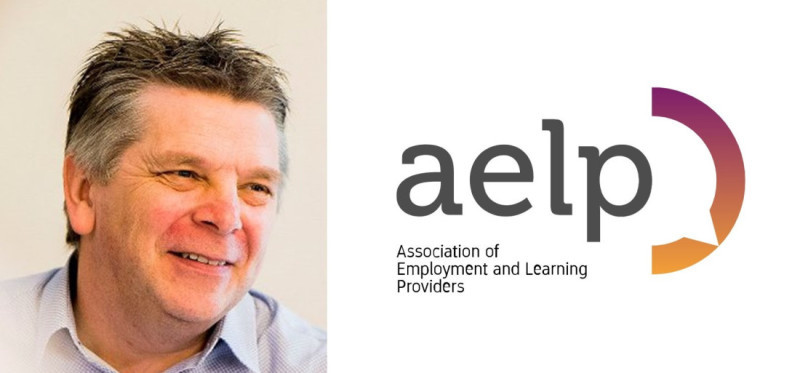In the News
T Levels are level 3 qualifications, equivalent to three A-levels, which focus on teaching vocational skills to 16 to 19-year-olds and include a mandatory 45-day industry placement.
They are being rolled out in waves each September between 2020 and 2023 but have faced problems recruiting students and finding them placements.
Now, with the first wave of students set to finish their courses, are T Levels in danger of losing their focus as a student’s primary route into apprenticeships, level 4 and 5 education, and employment?
The Skills for Jobs white paper, released in early 2021, stated T Levels “will be the option of choice for the majority of 16- to 19-year-olds who want to progress into skilled employment or onto higher levels of technical education”.
The government’s Post-16 Skills Plan, published the same time as the Sainsbury Review which set the wheels in motion for T Levels, includes a diagram with arrows showing how a T Level-like qualification would lead directly to degree and higher apprenticeships and level 4 and 5 education. Going from a T Level to university would only occur “where appropriate,” the plan says.
Yet, in the face of concerns from parents, the Department for Education has offered reassurances T Levels definitely can be a route to university.
A list, published by the DfE last week, shows all the universities which will affect T Levels for at least one of their courses. Not that this will reassure parents much, as less than half of all UK universities will accept T Levels, not including most members of the Russell Group of top higher education providers.
Interview
We spoke to Paul Warner, Director of Strategy and Business Development for the AELP about how the radical promise of T Levels has been diluted and how the flagship qualifications have not been built with independent providers in mind.

Have T Levels drifted from their original purpose as the primary route for students to get onto level 4 and 5 training, apprenticeships and employment?
I don’t think there has really been any mission drift as regards the purpose of T Levels. They were designed primarily as a route to employment, and whether or not you believe they are potentially any better at doing that than the existing alternatives, that remains their primary objective. The issue is that given the rather small numbers of learners currently taking them, the government appears to be looking to make them more attractive to a wider cohort. They were rather hoping that the universities could do them a favour by not only giving them UCAS points, but clearly making T Levels a valid option with which to qualify for the offer of a place on a range of courses. So far, the universities as a whole don’t appear to be completely playing ball with this objective.
Is it a concern that the government appears to be trying to buttress T Levels as a route to university?
By trying to unsubtly incorporate an academic destination as an objective for T Levels, it further dilutes the idea that T Levels are a radical overhaul of the technical and vocational skills landscape. More and more, they look like what they are – a tweaking of the existing model of two-year classroom-based, academic-year focused qualifications. Instead they could have been an innovative model if policy designers had actually taken on board the competencies of a wider set of providers than just colleges and schools.
The government appears to be looking to make them more attractive to a wider cohort
What problems does this present to students trying to follow a vocational route?
By making T Levels increasingly look like what is already there, potential learners just end up rather confused as to why they should do these new untried qualifications rather than other options that are more familiar to them. This sounds like I’m somehow anti T Levels and I’m absolutely not – I just think there’s been a big missed opportunity here to do something really different and beneficial. It’s increasingly just becoming same old, same old.
At the AELP’s autumn conference, IfATE implored ITP leaders to keep an “open mind” about T Levels – why is it T Levels are delivered by so few ITPs? What can government do to help
Through the design stage we and others had been urging that ITPs (particularly apprenticeship providers) could substantially help with employer links and industry placement, a call which was ignored. We said that ITPs might be able to experiment with a roll-on roll-off system rather than using fixed start dates, an offer which was also ignored. The application process to be named as a T Levels provider didn’t do ITPs any favours, and then when wave 1 providers were announced – which I think I’m right in saying included only 3 ITPs in the 50 or so named at the time – it was announced that ITPs would be ineligible for the capital funding being offered to “all” T Level providers. It’s hardly surprising ITPs are therefore a bit jaundiced about the whole concept and are not exactly falling over themselves to get involved now.
Does AELP believe getting more ITPs involved in T Levels would help boost student numbers, industry placements, and provide students with the vocational route the government originally envisaged?
It could have helped had the design of T Levels actually incorporated the particular strengths of the offer and core competencies of ITPs. As it is, in order to deliver T Levels, ITPs have to act like colleges. This isn’t an attractive proposition for many of them because it’s asking them to stop doing what they do best – and compete with providers who have far more experience in delivering the design as it stands. ITPs always have something to offer the skills landscape, but this could have been so much more effective if their strengths had been recognised and incorporated in the first place, rather than just seeing them as some sort of emergency button – “in case of low learner numbers, break glass and add ITPs”.
Opinion
Simon Connell, CEO of the Baker Dearing Educational Trust, argues while T Levels have moved from their original intent, there still needs to be apprenticeship options at the end of them, and existing vocational courses must be maintained.

Navigating the Shift from Ambitions to Realities for T Levels
No battle plan survives first contact with the enemy, so it’s hardly a surprise that since T Levels were conceived as part of the Sainsbury Review, there has been movement away from their original intent.
The ambitions at the time were clear: industry experts would lay down the knowledge and methods of assessment for new qualifications; young people would be provided with clear educational routes leading to employment; and provisions would enable students to switch between academic and technical education routes.
Last week, Baker Dearing asked UTC principals and employer partners to respond to the latest inquiry into whether post-16 qualifications really do prepare young people for the world of work. Their feedback shows that we have shifted away from those original ambitions.
Of course, raising the profile of technical courses through T Levels is welcomed, as are reducing over 4,000 Level 3 qualifications and addressing chronic underfunding for post-16 delivery.
However, T Levels are fundamentally different qualifications from those already available. They should complement, rather than replace, current offerings. By removing existing qualifications, 70 per cent of UTC leavers who started excellent apprenticeship and university pathways last summer would not be able to complete their courses: these qualifications will not be available in the proposed new landscape. This represents a significant risk to the future workforce, and in turn the economy, over a very short period of time. A longer transition period is needed.
This represents a significant risk to the future workforce, and in turn the economy, over a very short period of time
Removing existing technical qualifications will also deter many young people, currently progressing to Level 3 technical study at age 16, from doing so. Methods of assessment such as ‘high stakes’ exams do not suit all learners. At the same time, flexibility to combine academic and technical qualifications, which the system now provides and is highly valued by UTC employer partners and students, will be lost. How does this reconcile with the ambition that technical qualifications should be employer-led?
Ultimately, of course, students will decide whether T Levels are a success. Here, two policy initiatives are needed to skew the odds. First, without addressing the dearth of higher- and degree-apprenticeship opportunities, T Levels may be seen as providing ‘false hope’. Second, preparing young people for the world of work must start earlier than at age 16. Students need to ‘try’ technical courses at pre-16 before they ‘buy’ at post-16. Accountability measures such as Ebacc have squeezed vital technical and creative courses out of the pre-16 curriculum. This too must change for T Levels to succeed.



